The Covid-19 pandemic has stakeholders across the renewable energy sector thinking about supply chains and how to maintain them — which makes it an opportune moment to also talk about recycling.
The idea of circularity — that is, creating a closed-loop supply chain — has recently gained traction in the solar and energy storage industries, both of which face daunting recycling problems. According to the International Energy Agency (IEA) and International Renewable Energy Agency (IRENA), by 2030, an estimated 1.7 million metric tons of solar panels per year will need to be disposed of in the U.S. alone; by 2050, that figure could balloon to 60 million to 78 million metric tons.
The potential is enormous — if properly recycled, 1.7 million metric tons of panels could produce enough raw materials to make 60 million, or 18 GW, of new panels.
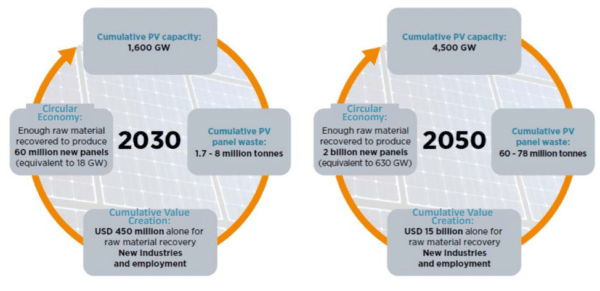
Source: NREL/IEA/IRENA, 2016
Storage is sketchier
For storage, the numbers are sketchier, based primarily on electric vehicle (EV) batteries, rather than stationary installations. Current estimates of the 2030 need for lithium-ion battery recycling range from 3 million to 5 million tons per year, according to Kunal Phalpher, chief commercial officer at Li-Cycle, a Canadian battery recycling firm with plans to open a U.S. facility.
What’s surprising and significant here is that while solar is the more mature industry, energy storage has edged ahead in the development of recycling technologies aimed at recovering high-value materials that can then be used to make new batteries. Solar lags, at least in part, because the major components of panels — glass and silicon — while highly recyclable, are not as valuable as the lithium, cobalt and nickel in batteries.
In one example of current momentum in battery recycling, Li-Cycle reported it had shipped its first recycled battery materials from its Ontario plant, using a method that allows it to process a mix of batteries, regardless of use or specific chemistry. An additional process for recovering battery-grade minerals, such as lithium and cobalt, has been successfully piloted, but is not yet available at commercial scale, Phalpher said.
U.S. battery maker Kore Power also recently announced a partnership with Renewance, a recycling solutions firm, to explore opportunities for end-of-life batteries to be recycled for use in the production of new batteries. A completely closed loop is not yet a reality, said Dave Mauer, Renewance VP of sales and services, but “as the need scales, the recycling technology will be in place.”
Laws requiring solar recycling
In solar, the biggest development in the U.S. has been Washington State’s much-heralded law requiring recycling of solar panels at no expense to the final owner. However, full implementation could be pushed back two years, from 2021 to 2023, pending recommendations from a stakeholder panel that will include industry and environmental groups.
Only one U.S. solar manufacturer — First Solar — has developed in-house recycling capabilities, currently limited to processing the company’s own thin-film, cadmium telluride (CadTe) panels. The sole industry-wide recycling initiative — sponsored by the Solar Energy Industries Association (SEIA) — has five additional recycling partners, with 12 locations, and three more pending, across the U.S.
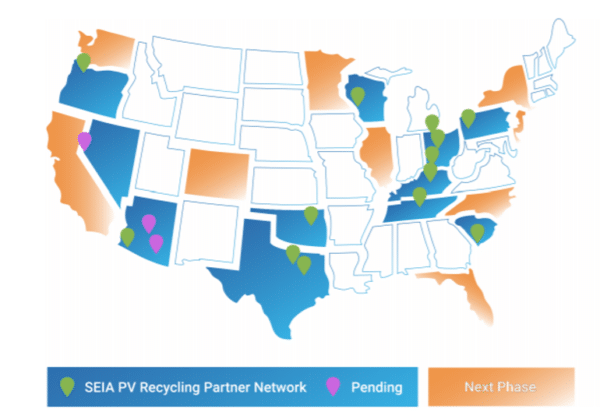
Source: SEIA
PV panels are recyclable but there’s not enough capacity
The growth of recycling in both sectors is tied to three main factors — life-cycle length, economic value and environmental impact. The simple fact that solar panels can last 25 years, versus 5 to 10 years for most lithium-ion batteries, has slowed research and infrastructure development on solar recycling.
More to the point, the lithium, cobalt and nickel often used in batteries are scarcer, and therefore more expensive and valuable than most of the components in solar panels. The most valuable component in solar panels — silver — is a relatively minor one and therefore more difficult to isolate and recover.
Instead, research focusing on recovering solar-grade silicon is needed to improve the economics of panel recycling, said Garvin Heath, senior scientist at the National Renewable Energy Laboratory. He noted that it now costs $20 to $30 to recycle a panel versus $1 to $2 to send it to a landfill.
But even the suggestion that solar panels or storage batteries could end up in landfills opens the door to industry critics ever ready to undercut renewable energy’s profile as clean, green power. The impacts here go beyond supply chain, trickling down to the basics of market growth for individual developers and installers, said Nick de Vries, senior vice president of technology and asset management at Silicon Ranch, a solar developer based in Nashville.
“You are going to places where solar is new,” de Vries said. “You are going to come up against these questions. Are solar panels recyclable — yes. Do we have the capacity — no. We have to see recycling capacity keep pace with installations.”
This content is protected by copyright and may not be reused. If you want to cooperate with us and would like to reuse some of our content, please contact: editors@pv-magazine.com.
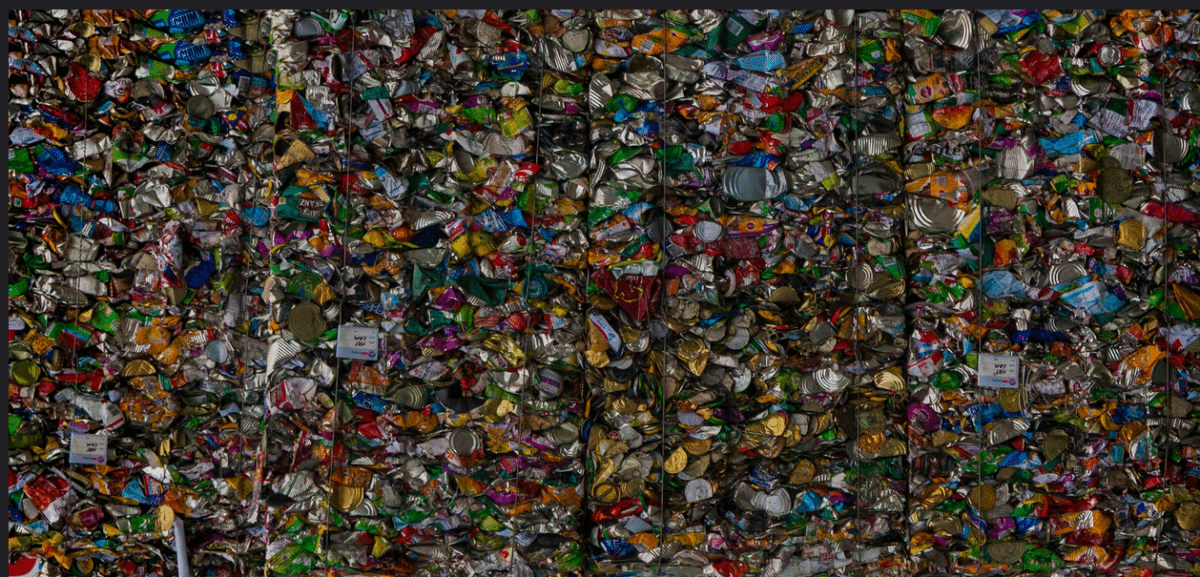
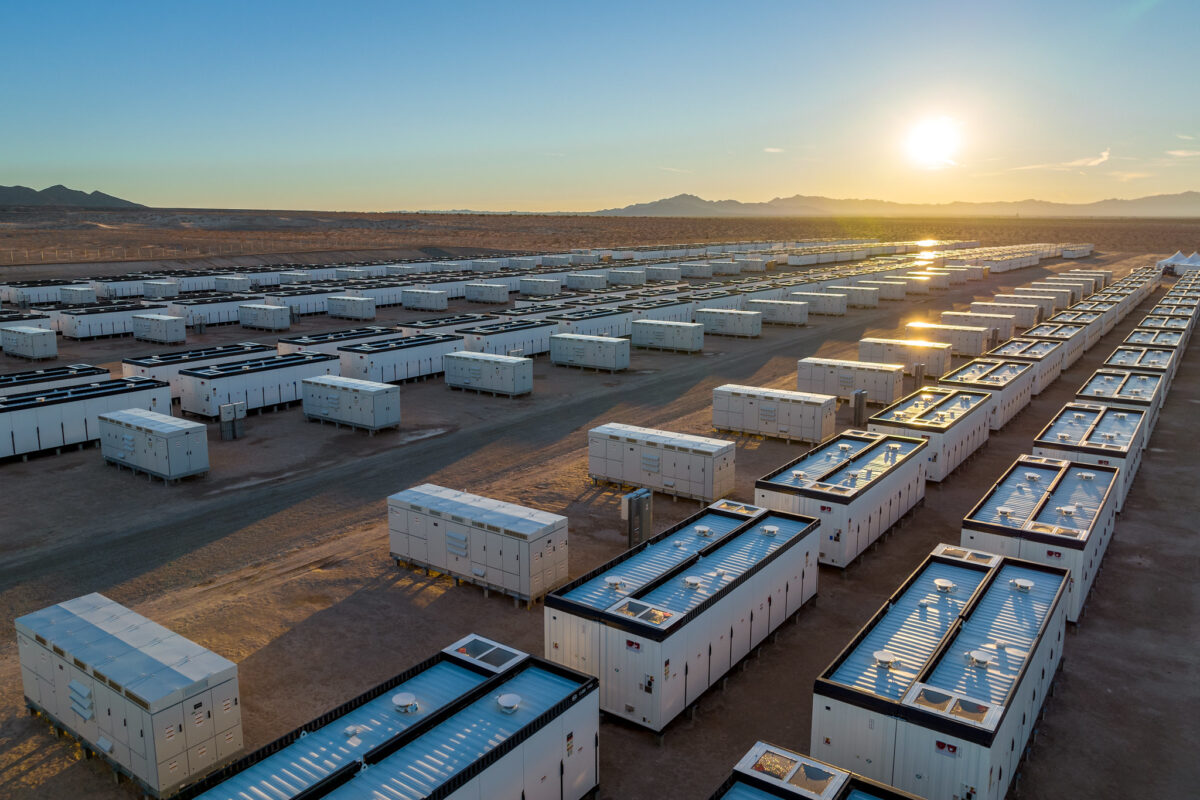




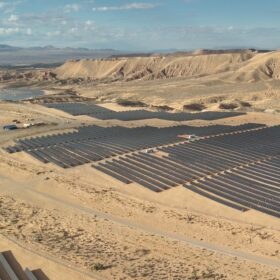

Why would recycling of solar panels be any more successful than the recycling of plastic containers, for example? Both are low recycle value items. The appropriate end of life aspects of solar panels should have been figured out long before now. Looks like the solar industry is following the same playbook as the nuke industry and nuke waste. Remember when the nuke guys said that their spent fuel was going to go to “breeder reactors” to provide near-infinite fuel life?
You’re referring to politics over economies of scale operations. SALT, SALT II and whatever it is called now, non nuclear proliferation treaties have created the milling and reuse of ‘spent’ fuel rods Internationally illegal.
This is the driving force right now: “Instead, research focusing on recovering solar-grade silicon is needed to improve the economics of panel recycling, said Garvin Heath, senior scientist at the National Renewable Energy Laboratory. He noted that it now costs $20 to $30 to recycle a panel versus $1 to $2 to send it to a landfill.”
First Solar uses CdTe in their solar PV panels. They have had a “cradle to cradle” program since the late 1990’s or early 2,000’s. The ‘other’ problem is now that there is a lot of solar PV manufacturing around the world right now, panels are running at manufacturing production runs of from $0.20 to $0.30/watt. Sooner or later costs may drop to that $0.15 and maybe $0.10/watt in quantities of 10,000 or more. Technologies are incrementally increasing solar PV yield and there are some companies that say their (product line) panels are creating 23 to 24% efficient panels in large quantities. Those that put in solar PV farms a few years back, with panels that had 16 to 17% efficiency could be replaced by 23% efficient solar PV panels for less per watt. The market is getting ripe for a secondary solar PV “used” market. Instead of $20 to $30 dollars to recycle with todays technology, acquire, test, repackage and sell for something like $4 to $6 dollars per panel to reuse on secondary solar PV systems. This kind of thing would be good for community projects that would be ground mounted and around 100kWp up to 4MWp. Imagine taking the tax monies going towards monthly electric bills for something like Libraries, Fire Stations, Community buildings and installing one large solar PV array to power the community services buildings, leaving tax monies for program services.
The research for recovering silicon is way past due. The economics do not support recycling. The solar PV industry has been irresponsible in not providing panel end of life answers, just like the plastic packaging guys and the compact fluorescent lamp guys and many others.
Re-use of panels is a good idea as is the re-use of most items. Panel costs though are becoming a smaller and smaller portion of total system costs so the economics may not support re-use well either.